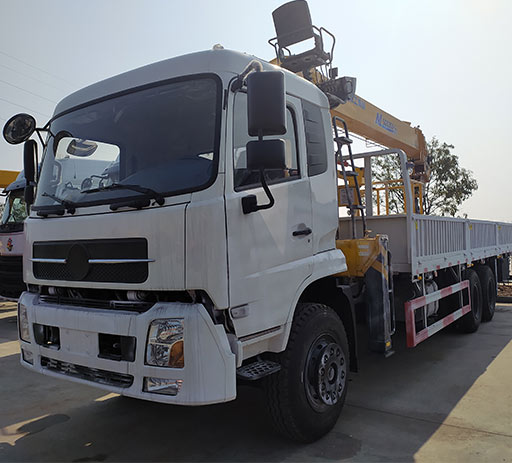Understanding Dump Truck Capacity: A Comprehensive Guide

Introduction
Dump trucks are essential vehicles in the construction and mining industries, serving as crucial tools for transporting materials. However, the effectiveness of a dump truck largely depends on its capacity. This article delves deep into the concept of dump truck capacity, exploring its determinants, types of dump trucks, practical applications, and how to choose the right truck for your needs. Whether you are a construction manager or a DIY enthusiast, understanding dump truck capacity is vital to ensuring your projects run smoothly.
What is Dump Truck Capacity?
Dump truck capacity refers to the maximum amount of material that a dump truck can carry. This capacity is usually measured in cubic yards or cubic meters for volume and tons for weight. Understanding the load capacity helps operators maximize efficiency while complying with safety standards.
Factors Affecting Dump Truck Capacity
The capacity of a dump truck can be influenced by several factors:
- Dump Truck Size: The overall dimensions, including the length, width, and height of the dump bed, play a critical role.
- Type of Material: Different materials have varying densities, which can affect how much weight a truck can carry even if the volume remains constant.
- Local Regulations: Authorities often impose weight limits on trucks to ensure road safety and prevent damage.
- Truck Design: The materials used in truck construction and the design of the dump bed influence capacity and performance.
Types of Dump Trucks and Their Capacities
Different kinds of dump trucks are designed for various applications and have unique capacities:
1. Standard Dump Trucks
These are the most common type and typically have a capacity ranging from 10 to 16 cubic yards.
2. Transfer Dump Trucks
These come with a trailer that enhances their capacity, allowing for a total of around 20 to 24 cubic yards.
3. Side Dump Trucks
With side-opening capabilities, these trucks can carry about 15 to 20 cubic yards and are often used for larger projects where quick unloading is needed.
4. Articulated Dump Trucks
These are designed for off-road use and generally have a capacity of 25 cubic yards or more, suitable for rough terrains.
5. Double and Triple Axle Dump Trucks
These trucks can accommodate more weight due to their additional axles, typically carrying between 15 to 30 tons.
How to Calculate Dump Truck Capacity
Calculating dump truck capacity can help operators determine whether a truck is suitable for a project. Here’s a simple formula to help you:
Volume Calculation
Volume can be calculated using the formula:
Volume (cubic yards) = Length (feet) × Width (feet) × Height (feet) / 27
Weight Calculation
For weight, you can use the吨的一个比例:

Weight (tons) = Volume (cubic yards) × Material Density (tons/cubic yard)
Practical Examples of Dump Truck Capacity
Understanding dump truck capacity is more meaningful with practical examples:
Example 1: Gravel Fundation in a Construction Site
If you need 50 cubic yards of gravel and your dump truck has a capacity of 10 cubic yards, you’ll need to make 5 trips to haul the entire amount.
Example 2: Moving Soil
For a landscaping project requiring 30 tons of soil, if the soil density is 1.2 tons per cubic yard, you’ll require:

Volume = Weight / Density = 30 tons / 1.2 tons/cubic yard = 25 cubic yards
If your dump truck has a capacity of 15 cubic yards, then you would need 2 trips, with one partial load.
Choosing the Right Dump Truck
Here are essential considerations when selecting a dump truck based on capacity:
1. Assess Your Project Needs
Understand the types of materials you’ll be transporting and the overall volume required.
2. Check Local Regulations
Always verify weight limits imposed by local authorities to avoid fines or accidents.
3. Consider Operational Efficiency
A truck with the right capacity ensures less downtime and more efficiency, costing you less in the long run.
4. Evaluate Equipment Size
The size of the dump truck should also accommodate the space in which you’ll be operating.
Maintaining Your Dump Truck for Optimal Capacity

Regular maintenance is key to ensuring your dump truck performs well. Here are some tips:
1. Regular Inspections
Check for any signs of wear in your truck components like the dump bed, hydraulic system, and tires.
2. Proper Loading Procedures
Avoid overloading to maintain truck integrity and ensure safety. Always load uniformly to prevent structural damage.
3. Clean the Dump Bed
After every use, clean the dump bed to avoid residue buildup that may affect capacity.
4. Monitor Tire Pressure
Maintaining the correct tire pressure is crucial for weight distribution and handling performance.
Dump Truck Capacity FAQs
1. What is the average capacity of a standard dump truck?
The average capacity of a standard dump truck ranges between 10 to 16 cubic yards.
2. How do I determine if my dump truck is overloaded?
You can determine if your dump truck is overloaded by comparing the loaded weight to the manufacturer’s recommended weight limit, typically found in the vehicle’s manual.
3. Can dump truck capacity be increased?
It is not advisable to modify a dump truck to increase capacity due to safety and legal implications. Always adhere to manufacturer specifications.
4. How does dump truck capacity affect project timelines?
Higher capacity can reduce the number of trips required, leading to quicker project completion.
5. Are there different capacities for different materials?
Yes, different materials have varying densities, affecting how much volume can be transported for a given weight.
6. How often should I maintain my dump truck?
Regular maintenance checks are recommended every 1-3 months, but it also depends on frequency and intensity of use.
